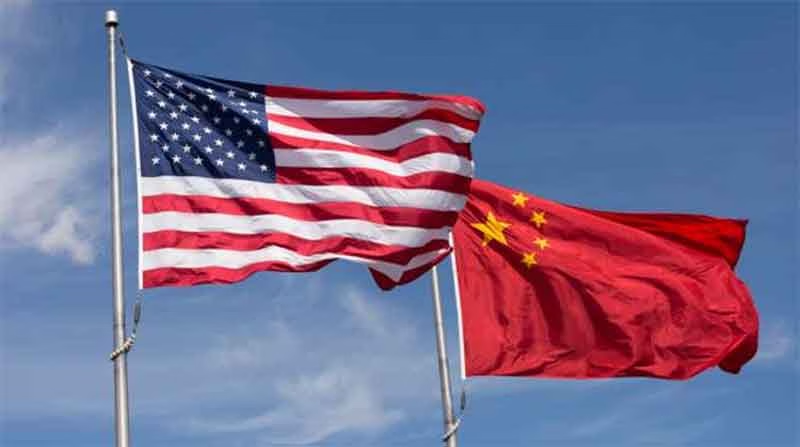
Our farmers for the last four years are waging relentless struggle for legal guarantee for crop MSPs and against corporate control of markets and their land. Imposition of Trump’s reciprocal tariffs there will be a serious blow to our agriculture. President Donald Trump is threatening to change the world trade that is existing since the last several decades. There will be a shift in structural balance in world markets. Trump termed April 2nd, the Liberation day, and claims that American industry has been experiencing severe losses from US imports from other nations. He is imposing reciprocal tariffs charged equally to match duties other nations imposing on US imports to compensate losses incurred by American industries. Nations around the world are upset and scrambling to ease the trade to lessen the losses to national economies. According to New Delhi based Trade Research think tank, GTRI, India will be severely impacted by tariffs.. With exports to United States ranging from garments, jewelry, electronic goods, rice, prawns and sea food valuing $ 78 billion in 2023-24, is severely stressed. Despite it’s farm surplus in bilateral trade with USA, the man power intensive sectors like agriculture, garment, automobile spare parts, jewelry and other small and medium industries may suffer severe losses from Trump’s recent trade policies.
Bilateral farm trade between India and the US is modest, at just $8bn, leaving United States with trade deficit. India mainly exports rice, shrimp, honey, vegetable extracts, castor oil and black pepper, while the US sends almonds, walnuts, pistachios, apples and lentils. So far, India has been imposing import taxes and certain controls as per the WTO norms to protect Indian farmers from dumping cheap foreign farm products. However, as part of the new reciprocal tariffs, we will be obliged to import wheat, maize, pulses, chicken meat diary and several and other products. And seriously challenges the very livelihood of farmers and food security of the nation.
Currently as the income from crop cultivation is declining rapidly women farmers are supporting the family with diary. Now India is the top producer of milk in the world. But with imposition of 38.29 percent of Trump’s tariffs a kilogram of desi ghee costing Rs 600 presently will rise to Rs 760 per kilo. But increased price of Rs. 160 will directly remitted to American agribusiness MNCs, making the farmer poorer. Similarly Andhra Pradesh is a major exporter of fresh water prawns to United States. With new 26 percent of tariff a kilogram of prawns will fetch in American super markets Rs180 only against their cultivation cost of Rs 250 for a kilogram in Andhra. In America, cost of production of a quintal of wheat is Rs 1,700 (nearly $200/Q) per quintal compared to MSP announced by government is Rs 2,425 in India.
Mr. Howard Lutnick, US commerce secretary in his recent visit to New Delhi questioned in a threatening voice why India is not buying even a single bushel of corn from America and wanted the 140 crore Indian consumer market opened to American agribusiness. Average Indian farmer holding is below 1 ha. Imagine his fate if domestic wheat and paddy markets are exposed to four major grain trading American multinationals like Cargil, Bunge and others. President Trump claims the trade with other nations has been highly disadvantageous, even America is being looted and ripped off. Hence, to remedy this situation he announced tariffs on American imports calculated based on trade deficit. Imposed reciprocal tariffs range from average 10 percent to 120 percentage points splashed on nearly 140 nations. Even poorest African nation Lesotho was imposed 50 percent tariff and similar is the case with Myanmar and Bangladesh. The reality is very much different from what President Trump claims. The formula taken for computing deficits is unscientific. Unlike in the past few centuries imperialist powers have shifted from territorial occupation to economic dominance employing trade wars and dollar currency manipulations to maintain unequal balance of commodity prices.
Institutions such as World Bank, IMF were created to regulate capital flows around the world. High interest rates to third world developing nations are often tied to military and political restrictions. World trade was manipulated using GATT (Agreement on terms of trade) to WTO to legalize balance of payments favoring the West and the trade barriers and sanctions were erected long before Trump’s reciprocal tariffs, mainly to control trade with developing nations.
Trade tariffs are nothing but maintaining price imbalance (in favor of affluent West) and continuation of neoliberal economic policies. Any increase in tariffs will make India’s exports to the US less competitive. Trump’s reciprocal tariffs will make Indian agricultural, seafood and processed foods 31 per cent more expensive in the US. That will make an American consumer to switch from costly Indian shrimp and rice to cheaper alternative products. Washington now wants to push it’s major farm exports – wheat, cotton, corn, soya and chicken meat to narrow its $45bn trade deficit with India. Suggesting India to lower farm subsidies, cut price support i.e. scrap crop MSPs and open up to genetically modified (GM) crops, American butter, chicken legs and dairy ignores the fundamental asymmetry in global agriculture.
India complains recommendations of World Trade Organization (WTO) and by imposing a certain level of import taxes. India and other developing nations were permitted by WTO (under amber box) certain concessions and subsidies to some crops so as to protect domestic farmers from unprecedented dumping of crop imports by other nations. For example for every acre of cotton crop India subsidises (under amber box) up to 8 percent (amounting to Rs 8,000) while US, for instance, heavily subsidises its agriculture and protects farmers through crop insurance. An American farmer gets up to 110% of cultivation expenses on every acre of cotton crop manipulating WTO’s Green box terms. Though the terms of trade and price imbalance persisted the trade sustained during the last three decades. But with Trump’s reciprocal tariffs WTO has become irrelevant making world trade subjugated to American terms. With exposure of Indian markets to American imports, poor Indian farmer has to match his prices with dumped cheap American cotton and eventually could devastate India’s smallholder farmers. India has emerged the number one producer of rice, milk, cotton, sugarcane and other products. However, with n imposed new reciprocal tariffs we are forced to import even cotton, wheat, corn, diary and other products from United states. Similar is the vegetable oil import story. Till 1990 India was self sufficient in oil seeds production. However, we were forced to import vegetable oils from other WTO nations by drastically reducing import taxes. Dumping of imported cheap palm, sunflower and other oils made cultivation of oil seeds unprofitable for our farmers and left cultivation. This led to severe shortages of vegetable oils and government currently incurs sums touching $ 16 bn every year. Similar will be the case with maize, sorghum and pulses, the lifeline for cultivation of our dryland small farmers. Imagine a similar scenario with dumping of cheap wheat, rice, cotton and diary products from America to narrow its $45bn trade deficit with India. Price falls in markets below the cost of cultivation thus bankrupting our small farmers increasing rural distress. Mere four multinationals- cargil, Burge, Lous dafus control world grain trade. They will be the major beneficieries of 140 crore Indian consumer market. This not only destroys livlihoods of millions of small farmers but also severely destabilizes food scccurity and Public Distribution system in the country. For the last four years farmers across the country are holding protests for guaranteed prices for their crops and corporate control over the markets and their land.
Unequal Partners
Trump wants India to lower tariffs on American goods and also buy more from it saying both countries match each other in trade with equal tariffs. The US has commercial agriculture, while India relies on intensive, subsistence farming. It’s a question of the livelihoods of millions of small Indian farmers versus the interests of US agribusiness. American agriculture is commercial with 8,000 big farmers while India with 85 percent of small farmers practice sustainable farming for their livelihoods. American farmers for all crops are heavily subsidized by their Federal government, while Indian farmers receive below 8 percent of subsidies on cultivation expenses. Keeping view of asymmetry, there can never be equal partners in trade. Hence matching reciprocal tarifs can not be applied to Indian farmers.
Why this silence?
Prime Minister Narendra Modi had visited Washington and met President Trump. In his presence Trump not criticized Indian trade policies and even demanded to lower import taxes and open the market for American agribusiness. PM Modi sat all through the meeting silently and even didn’t rise humiliating treatment of handcuffed illegal deportees in a military aircraft. Even after nearly a month, neither the PM, Commerce minister nor Finance minister did not speak to the nation. Also in the parliament no discussion on tariffs was allowed. People suspect that there is a reason behind this mysterious silence. Perhaps PM Modi wants to rescue his crony capitalist friend Gautam Adani from arrest and prosecution in United States. Surrendering before a bully President and sacrificing national interests is unpardonable.
What Government To Do
- Negotiate for low tariffs
- Compensate our farmers for loss of price incurred due to dumped imported farm products.
- Forge united front with European Union and BRICS nations to stand against US tarifs
- Alternatively start negotiating with other blocks such as BRICS, European Union, ASEAN, Middle East and other nations and enter bilateral trade agreements.
- Focus on agricultural research, food processing to rise crop productivity and farmers incomes to make our agriculture more competitive in world markets. Our crop productivity lags behind world averages.
Subscribe to Our Newsletter
Get the latest CounterCurrents updates delivered straight to your inbox.
On Monday stocks in India, major European, American and Asian have fallen drastically in response to Tariffs. Wide discontent is brewing against Trump administration in American public and huge demonstrations were held in almost all 50 states of USA. Hence, this is time to forge an united front with other blocks of nations and resist the unfair trade practices. Farmers should club struggle for crop MSPs with American imperialism.
Above all India must prioritise its national interest and protect its rural economy. Trade cooperation should not come at the cost of our farmers, food sovereignty or policy autonomy.
Dr. Soma Marla, Principal Scientist (retd), ICAR, New Delhi.















































